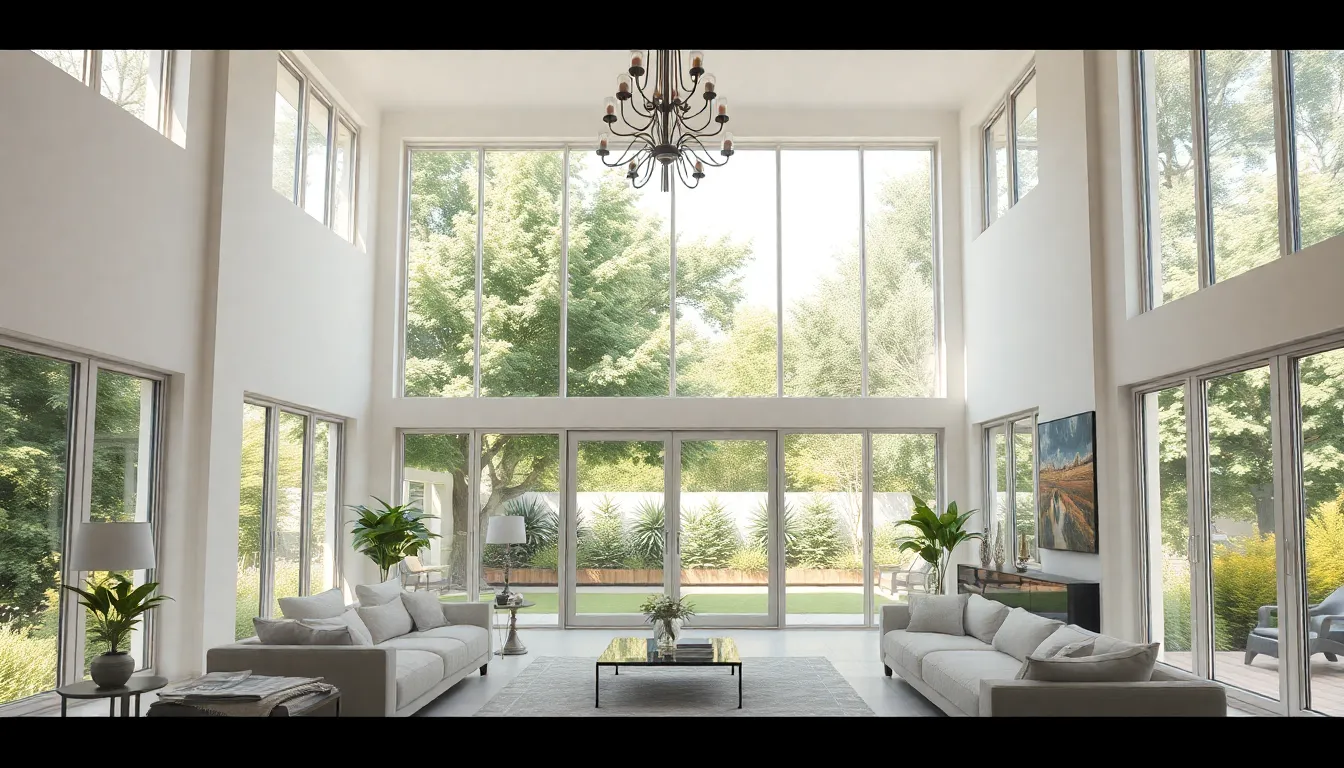Imagine waking up in a space that feels like a warm hug from the sun. Light-filled interiors not only brighten up a room but also elevate mood and productivity. Who wouldn’t want to swap the dreary shadows for a dance party of sunlight? It’s like giving your home a personality makeover—less gloomy hermit, more cheerful sunbeam!
Table of Contents
ToggleThe Importance Of Light-Filled Interiors
Light-filled interiors enhance overall well-being by promoting positivity. Natural sunlight increases serotonin levels, which enhances mood and decreases feelings of depression. Spaces flooded with light can improve focus and productivity, making them ideal for work and leisure.
Studies show that adequate daylight leads to better health outcomes. Improved sleep patterns occur because exposure to sunlight helps regulate the body’s circadian rhythm. Enhanced creativity also results from well-lit environments, fostering innovative thoughts and solutions.
Designers prioritize light in their projects for various reasons. Bright spaces appear larger and more inviting, encouraging social interaction. Utilizing reflective surfaces, such as mirrors and light-colored furnishings, amplifies natural light in a room.
Plants benefit from light-filled interiors as well. Indoor greenery thrives with access to sunlight, improving air quality. This combination of nature and light contributes to a serene atmosphere.
Energy efficiency often improves in light-filled spaces. Adequate daylight reduces reliance on artificial lighting, leading to lower energy bills. Sustainable design practices incorporate large windows and skylights to maximize natural light.
Architects aim to create harmonious connections between indoor and outdoor environments. By blending natural light with the surrounding landscape, they enhance aesthetic appeal. Integrating outdoor elements can elevate the living experience, making spaces feel more expansive and connected.
Key Elements Of Light-Filled Interiors

Light-filled interiors rely on specific aspects that enhance brightness and openness. Features such as architectural design and window placement play vital roles in maximizing natural light.
Architectural Design
Architectural design influences how light interacts with spaces. Open floor plans eliminate barriers, allowing light to travel freely throughout an area. High ceilings create a sense of volume, making rooms feel more expansive and airy. Skylights serve as an essential feature, channeling sunlight from above. Additionally, using light-colored materials helps reflect light, multiplying its effect. Incorporating open staircases and expansive doorways further facilitates light movement, fostering a more connected environment.
Window Placement
Window placement significantly affects the brightness of interiors. Strategically locating windows to capture sunlight during peak hours maximizes natural illumination. Larger windows provide expansive views while inviting ample light. Positioning them in south-facing walls ensures the greatest exposure during the day. Additionally, incorporating glass doors allows light to flow from indoors to outdoors and vice versa. Utilizing transoms and clerestory windows enhances vertical light penetration. Proper window treatments, such as sheer curtains, maintain brightness while ensuring privacy.
Benefits Of Light-Filled Interiors
Light-filled interiors provide numerous advantages that positively influence living spaces. These spaces promote happiness and comfort through the thoughtful use of natural light.
Enhanced Mood And Well-Being
Natural sunlight boosts serotonin levels, significantly improving mood and overall well-being. Positive environments emerge from ample sunlight, transforming atmospheres from dreary to vibrant. Increased exposure to daylight correlates with improved concentration and notably reduces feelings of anxiety. Studies show that individuals in light-filled settings experience better sleep patterns and higher levels of creativity. Light-filled interiors nurture not just physical health but also emotional health, fostering a sense of balance and tranquility.
Energy Efficiency
Energy efficiency ranks high among the benefits of light-filled interiors. Relying less on artificial lighting creates cost savings reflected in energy bills. Natural light illuminates spaces, minimizing the need for electric lights during the day. Architects and designers often emphasize open layouts and strategic window placement, maximizing sunlight entry. Utilizing materials that reflect light further enhances brightness without additional energy costs. This synergy between design and sustainability improves indoor environments while minimizing environmental impact.
Creating Light-Filled Interiors
Light-filled interiors enhance mood and productivity. Achieving this ambiance involves careful consideration of color schemes and materials, along with strategic furniture arrangement.
Color Schemes And Materials
Light colors amplify brightness in a room. Whites, soft pastels, and light neutrals create a reflective surface that encourages light bounce. Selecting materials like glass, polished metals, and glossy finishes enhances this effect. Natural materials, such as wood in light finishes, bring warmth while maintaining brightness. Incorporating mirrors also increases perceived light levels, making spaces feel more expansive and inviting. Soft textiles in lighter shades contribute to an airy atmosphere, enhancing comfort without sacrificing brightness.
Furniture Arrangement
Arranging furniture thoughtfully maximizes light flow. Positioning seating away from windows prevents blocking natural light. Choosing low-profile or transparent furniture allows light to pass through the space effortlessly. Grouping furniture to create open pathways promotes a sense of openness. Placing larger furniture against walls can help maintain flow in the center of the room. Additionally, incorporating multi-functional pieces can keep the look uncluttered, thus amplifying the light-filled environment. Prioritizing flexible arrangements encourages interactions, creating welcoming and connected spaces.
Conclusion
Light-filled interiors offer a transformative experience that enhances not just the aesthetics of a space but also the well-being of its inhabitants. By prioritizing natural light through thoughtful design choices, individuals can create environments that promote positivity and productivity. The benefits extend beyond mood improvement to include better health outcomes and increased energy efficiency.
Incorporating elements like open layouts and strategic window placements fosters a harmonious connection between indoor and outdoor spaces. As designers continue to embrace the power of light, homeowners can enjoy the lasting advantages of bright, inviting interiors that nurture both mind and body. Embracing this approach is a step toward a more vibrant and fulfilling living experience.





